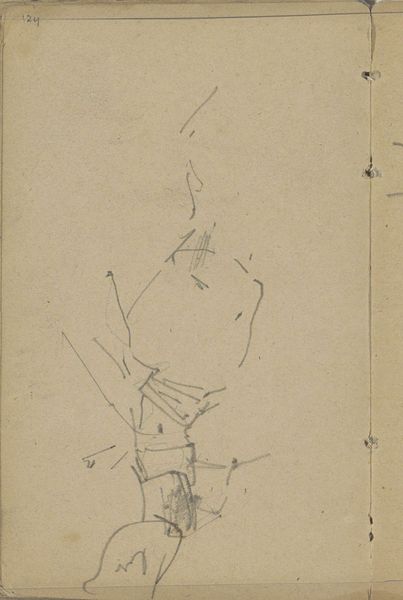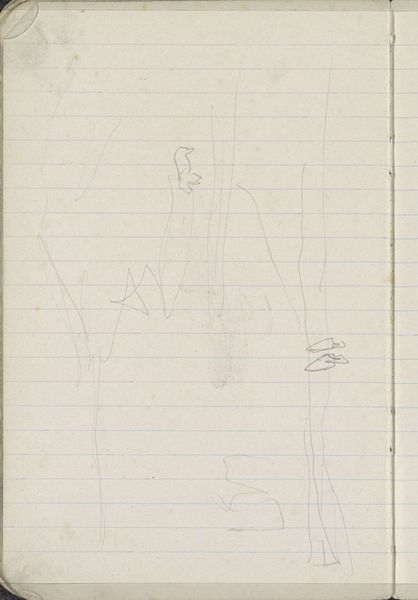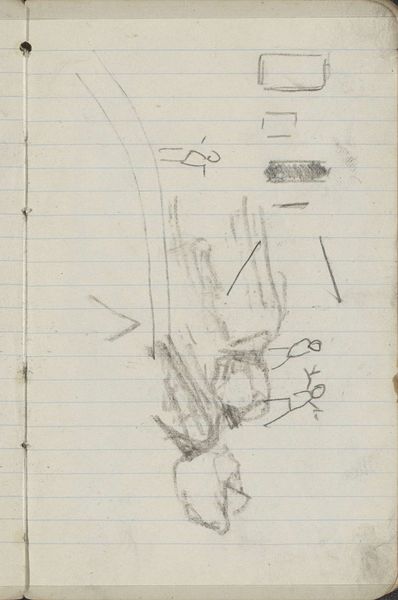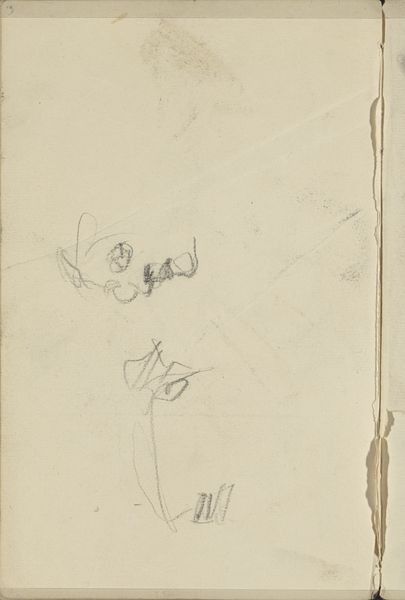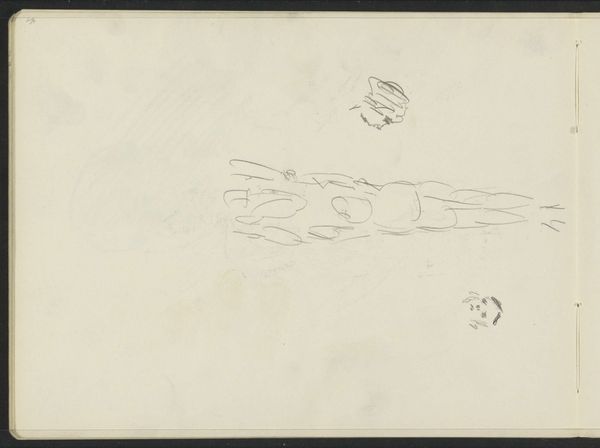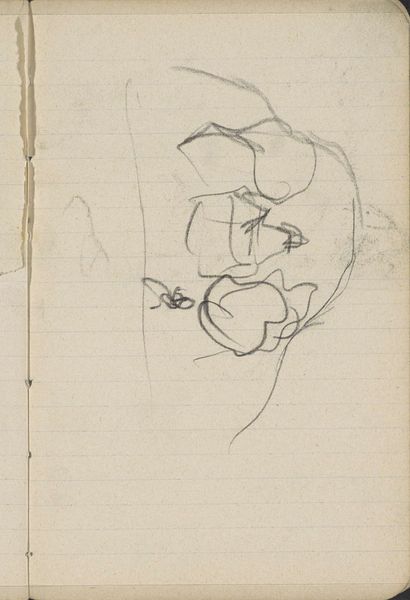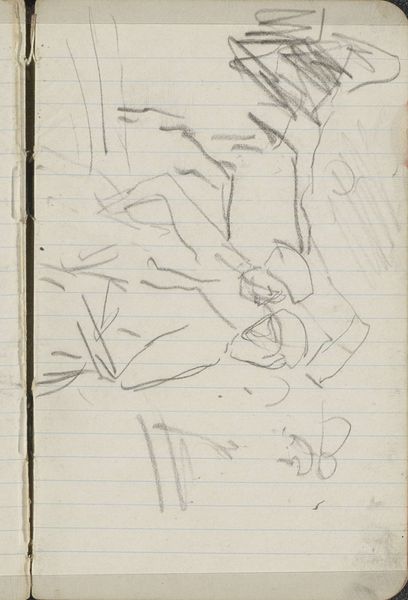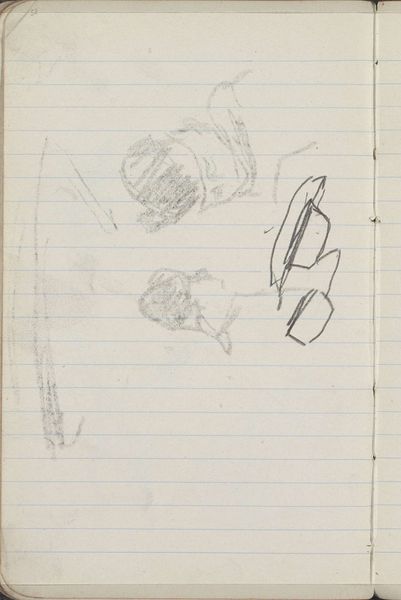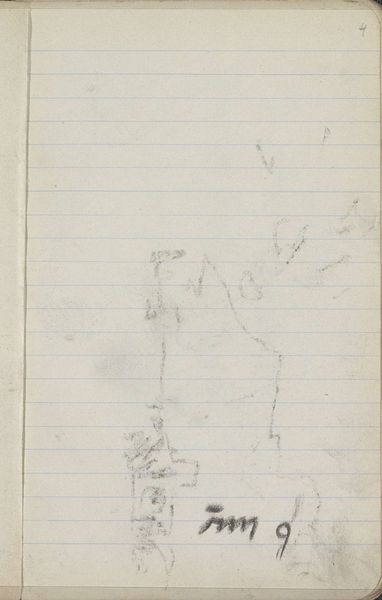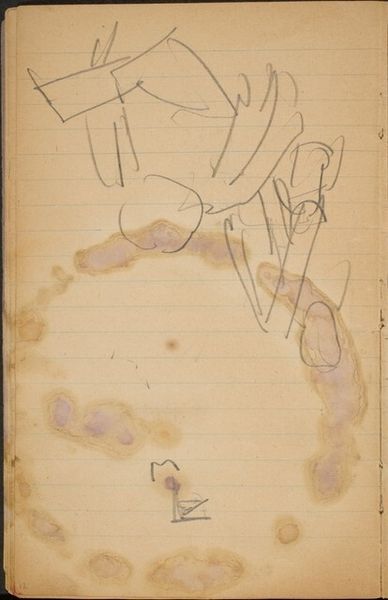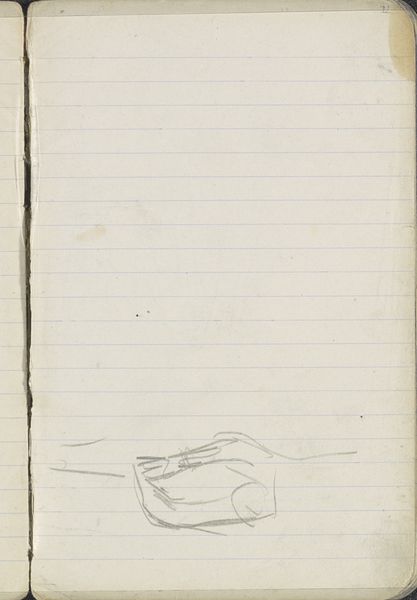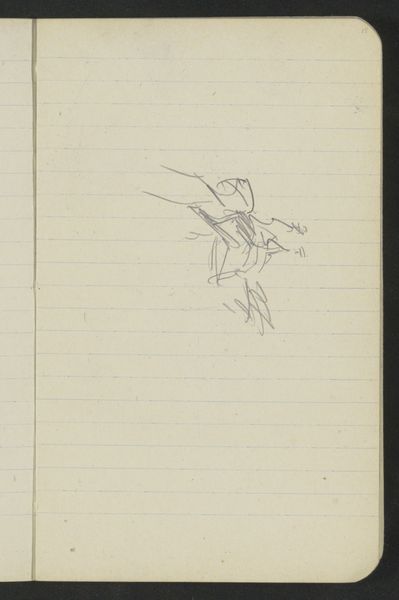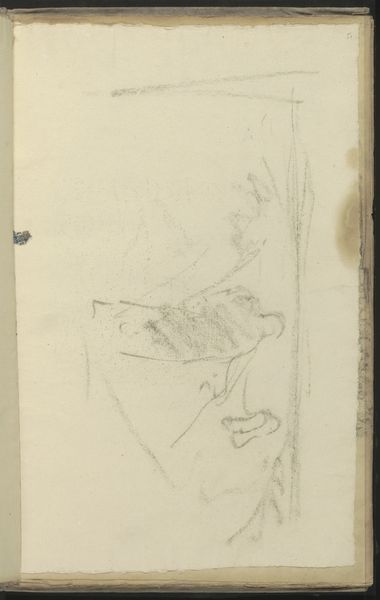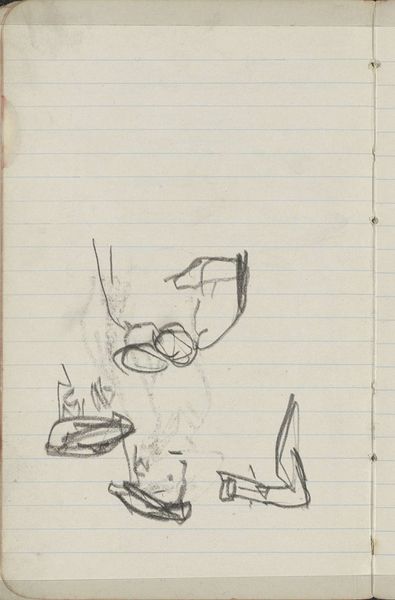
Copyright: Rijks Museum: Open Domain
Editor: So, this drawing by George Hendrik Breitner is called "Annotaties," made sometime between 1895 and 1898. It looks like pencil on paper, a page from a sketchbook maybe? There's a sketchy image and some handwritten notes. I’m struck by how informal it feels, almost like peeking into the artist’s thought process. What do you see in this piece? Curator: Well, looking at this drawing through a materialist lens, I'm immediately drawn to the paper itself. Ruled lines, cheap stock—clearly a readily available, utilitarian object. Not precious. The pencil marks are quick, economic. It speaks to the labor of artistic production – not as some grand, romantic gesture, but as everyday work. This challenges the idea of "high art" by showcasing the unglamorous process. Editor: That's interesting. I was just thinking about it as an incomplete artwork. Curator: But isn't the "incompleteness" itself revealing? What does it say about Breitner’s studio practice, or perhaps about the artistic culture that consumed these kinds of preparatory drawings? Were sketchbooks like this meant to be seen, or were they simply functional tools? And what does it suggest about the value we place on finished versus unfinished work, and the economic structures that drive that preference? Editor: So, it’s not just a sketch, it’s a document of artistic labor, almost like a receipt for ideas? Curator: Precisely! And considering the social context – the late 19th century, the rise of industrialization – what does the choice of readily available materials like pencil and lined paper suggest about Breitner’s relationship to mass production and consumption? Was he commenting on it, embracing it, or simply working within its constraints? Editor: I see what you mean. Thinking about the materials and process definitely opens up a different way to interpret it. I was so focused on the image itself, I missed the bigger picture. Curator: Indeed! By examining the materials, production and its relationship to the societal context, we gain deeper insights into the artist's practice and how they interact with a constantly shifting society. Editor: This really made me reconsider the value we place on sketches and the artmaking process.
Comments
No comments
Be the first to comment and join the conversation on the ultimate creative platform.
